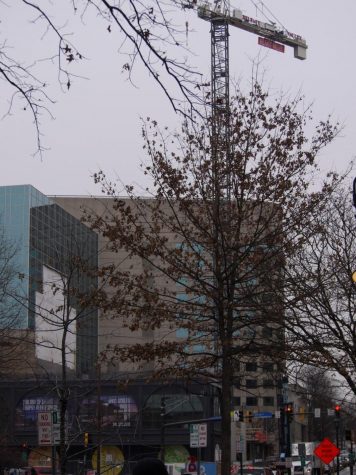Bethesda expansion brings vitality to community
January 10, 2018
When Bethesda was founded in 1871, it was only a few buildings off of Old Georgetown Road. But in the 1980s, the Metro added a stop in the center of the small town. All of a sudden, people from all over D.C., Maryland and Virginia arrived. They wanted places to eat, work, play and live, and Bethesda had to grow to provide.

The financial recession of 2008 slowed growth, but only momentarily. As the economy improved, a ravenous demand for goods and services emerged. Again, Bethesda started growing, and it hasn’t stopped since.
Bethesda’s changes are controversial—many long-time and some young residents wish Bethesda was still the small, quiet suburban town it once was. All things considered, though, the expansion has brought more vibrancy to Bethesda and stimulated its economy. This growth should be applauded and encouraged.
In the last few years, more people have decided to live in dense, urban areas, said Casey Anderson, chair of the Montgomery County Planning Board. Downtown Bethesda provides this compact scene. New Bethesda apartments, like the 10 story tall Flats 8300 on Wisconsin Avenue and the 12 story tall Solaire on Woodmont, have sprung up to meet greater demand. Because there are more people downtown, there’s a greater demand for more restaurants, activities and more. For example, at least 10 new restaurants opened in Bethesda in 2017. And the expansion will continue: in the next 25 years, Downtown Bethesda is projected to grow faster than all of Montgomery County.
This growth will also support Bethesda’s economy. As more people live downtown, rather than just go there to work, businesses need to open longer to serve their clientele during dinner or breakfast hours, not just work hours, Anderson said. With more people, Bethesda will also need more practical businesses like grocery stores and schools. This will hopefully attract even more retail and foster more innovation, according to the Bethesda Downtown Plan, a guide for the growth in Bethesda. It is a cycle of economic growth and expansion.
Yet many dislike these changes. Bethesda residents have complained about more congestion on roads. The most congested roads in Bethesda are those to D.C., according to the Mobility Assessment Report of Montgomery County. So, people who work in the District account for much of the congestion in Bethesda. For these commuters, one of the best alternatives is the Red Line to downtown D.C., with a station conveniently located in the heart of Bethesda. Taking the Metro is also more environmentally friendly than driving. Congestion is inevitable whenever a population is dense. Instead of fighting over unavoidable issues, we should employ solutions and encourage more growth.
Those who still wish that Bethesda was a small town offer a plethora of complaints: They don’t like the overcrowding. They don’t like the new nightlife. They don’t like the changing demographics. But these changes give residents the chance to experience more and see more. They add layers to Bethesda. The once small community of Bethesda should welcome newcomers and an influx of diversity, and continue to grow.






